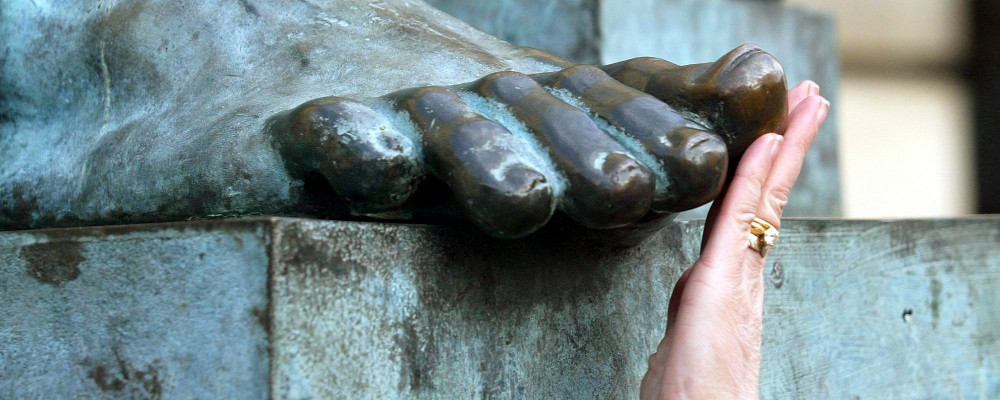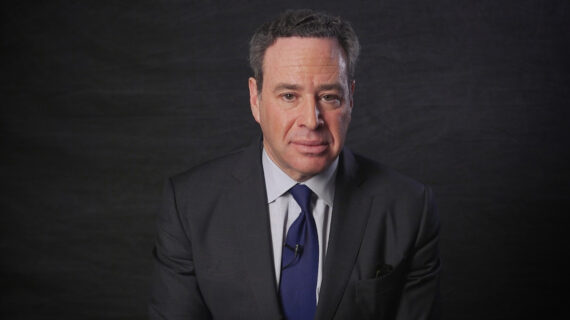Two hundred and forty-four years after his death, the philosopher David Hume narrowly survived posthumous cancellation over a footnote in which he unwisely speculated about the relative merits of the races. Considering Hume’s complete works run to 21,800 pages, it would have been an act of fanatical moral punctiliousness to consider his entire corpus, which includes several of the most important texts of modern philosophy, tarnished by a single footnote. So, naturally, that is what happened at the University of Edinburgh, where Hume’s name was removed from a nondescript building.
Fortunately, Hume’s statue remains on its pedestal above the city’s main street and his name graces several other locations, including a promenade overlooking the Firth of Forth. I say “fortunately” with no fondness for the gouty old sceptic, but because it is hard to think of Edinburgh without thinking of the Scottish Enlightenment, and impossible to think of the Scottish Enlightenment without its leading light.
My own taste runs more literary than philosophical, so, while I am glad Hume escaped his damnatio memoriae, I also approve the even greater prominence given to the memory of Sir Walter Scott. His legacy greeted me on my arrival at Waverley Station—the only railway station in the United Kingdom named for a novel—and saw me off courtesy of the eponymous Wetherspoons pub at the Edinburgh airport. And in between, his stupefying monument on Princes Street was unmissable from any vista.

The rational philosopher and the Romantic novelist represent two sides of Edinburgh, part of a pattern of contrasts that you start to notice as you walk around the city. This is far from an original observation. If you Google “Edinburgh” and “city of contrasts,” the hits run into the thousands. It is even the title of the city’s World Heritage Site Management Plan, and you know something’s a cliché if it’s penetrated municipal bureaucratese.
The most obvious dichotomy, and the one referred to in the World Heritage report, is the architectural contrast between (in case the physical contrast wasn’t clear enough) “Old Town” and “New Town.” With the medieval wynds of Old Town to the south and the Georgian symmetry of New Town to the north, the ceremonial thoroughfare of the Royal Mile runs between them like the line between superstition and reason.
The contrasts the length of the Royal Mile as well. At the top of the road, the city’s medieval castle commands the heights of an old volcanic rock, while the low postmodern hulk of the new Scottish Parliament crouches resentfully at the bottom. The pre-human geography provides its own contrasts, from Holyrood Park’s craggy Highland intrusion into the Lowland city to the steep valleys that slice through the city centre, requiring a network of vertiginous stairs and bridges to stitch it together.
Somehow, all these contrasts combine into a coherent sense of place. Part of the reason is that few cities in the world have been so shaped by a single age. Hume and Scott were just two of the philosophers, poets, scientists, soldiers, philanthropists, statesmen, and artists who put Edinburgh on the world map between the mid-1700s and the late 1800s, which was also when New Town was built and the castle was restored. But the real reason is that Edinburgh has never forgotten that time and those men. Their statues are everywhere.
Robbie Burns, Allan Ramsay, Robert Fergusson, Robert Louis Stevenson, Walter Scott, David Hume, Adam Smith, John Playfair, Dugald Stewart, James Simpson, Thomas Guthrie, James Watt, David Brewster, Henry Dundas, Arthur Conan Doyle, John Knox, Field Marshal Haig: their spiky gothic monuments and neoclassical memorials top the city’s hills and fill her valleys, a living landscape of memories amid Edinburgh’s stoic granite facades.
There is a lesson here for Canadian cities. It’s not a coincidence that our own most characterful cities are those which, like Montreal, were also built by a confident people (including more than a few lowland Scots) who memorialised themselves and their cultural heroes in monuments and statues that still adorn the city (you can find a statue of Robert Burns in Dorchester Square, not far from the Boer War Monument). Or those, like Quebec City, that promote their role in our national history as a tourist attraction instead of cause for self-flagellation.

Canadian cities could learn from Edinburgh that, when it comes to monuments, more is better, and even more is even better. The last Liberal government made a modest start when it commissioned the Valiants Memorial in downtown Ottawa, a grouping of busts and statues of fourteen Canadians who, according to the government of Canada website, “were chosen for their heroism, and because they represent critical moments in Canada’s military history.” It wasn’t much, but it was more than any recent Conservative government at the provincial or federal level has managed.
But where are the grand statues on plinths? Where are the soaring monuments, pillars, and follies? Spare me the sour objection that we live in an anti-heroic age. It’s a self-fulfilling complaint. Or that it would clutter our cities with kitsch. Today’s kitsch is tomorrow’s heritage (have you seen the Albert Memorial?) And it’s no excuse that it would be a challenge to reflect the conflicting character of such a divided nation; like Edinburgh, our cities shouldn’t be afraid to be places of contrast and to show off all their sides at once.
A Canada of 40 million may not have the concentration talent that the Edinburgh of 140,000 did in 1800, but we don’t lack for men and women worth remembering. Forget statesmen—we don’t have many of those—but we have our own artists and writers, some soldiers and scientists, a few philosophers, and even the odd (sometimes very odd) philanthropist. Fill our squares and line our streets with their faces and figures, the great as well as the good, Nobel laureates alongside local heroes known only to the neighbourhoods they served.
Edinburgh is a city of poets and philosophers. Anyone who visits quickly learns that by looking around them. What is Canada? If we let the ideologues who tried and failed to erase Hume from Edinburgh succeed here, we will never know, and neither will anyone else. The “history wars” that were recently and enthusiastically revived in these pages are important, but in the broader fight over Canadian history, they are mostly academic, literally and figuratively. In the end, a country is what and who it celebrates. And if it celebrates nothing and no one, then it will be nothing and nowhere.




